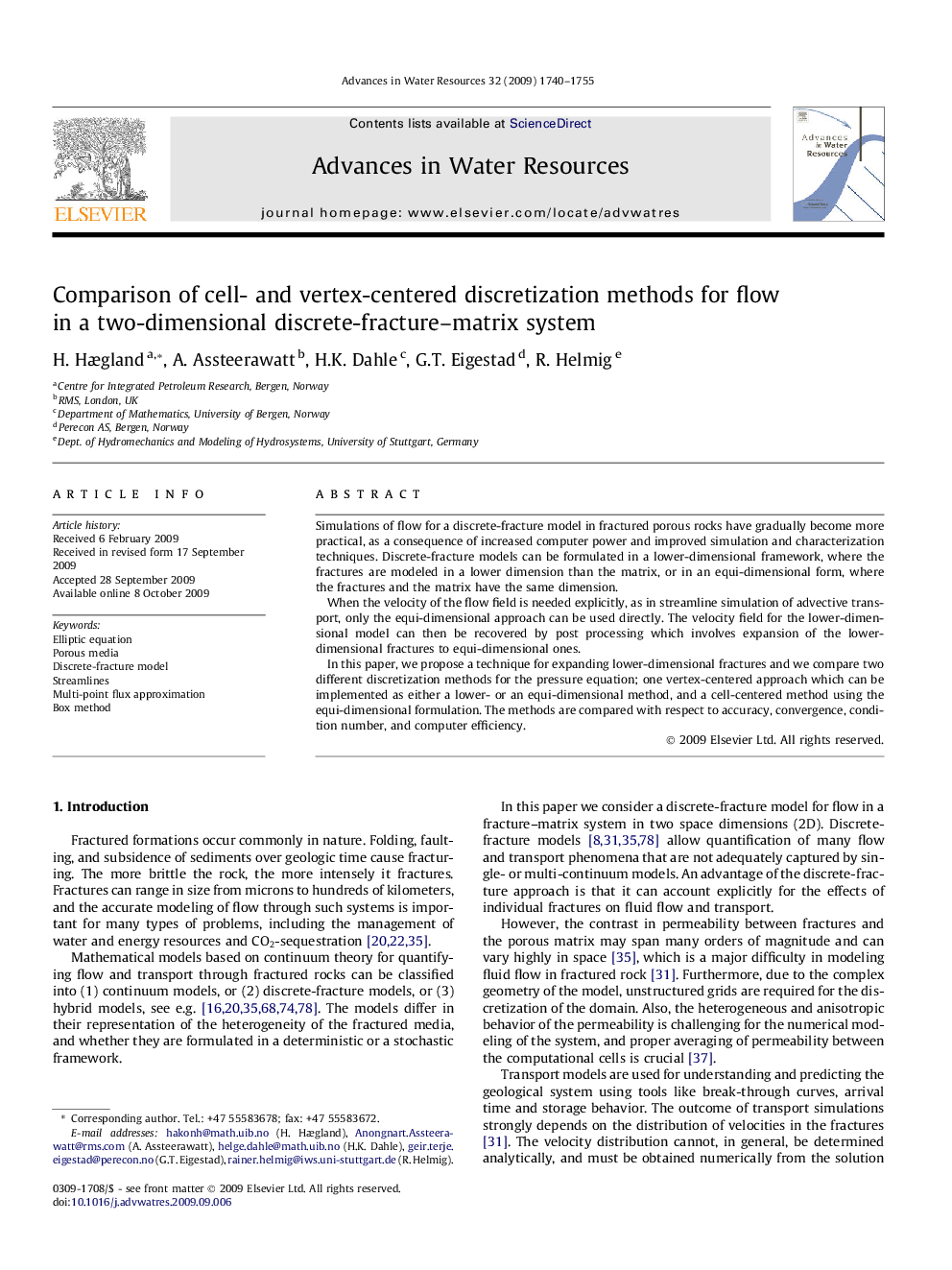| Article ID | Journal | Published Year | Pages | File Type |
|---|---|---|---|---|
| 4526143 | Advances in Water Resources | 2009 | 16 Pages |
Simulations of flow for a discrete-fracture model in fractured porous rocks have gradually become more practical, as a consequence of increased computer power and improved simulation and characterization techniques. Discrete-fracture models can be formulated in a lower-dimensional framework, where the fractures are modeled in a lower dimension than the matrix, or in an equi-dimensional form, where the fractures and the matrix have the same dimension.When the velocity of the flow field is needed explicitly, as in streamline simulation of advective transport, only the equi-dimensional approach can be used directly. The velocity field for the lower-dimensional model can then be recovered by post processing which involves expansion of the lower-dimensional fractures to equi-dimensional ones.In this paper, we propose a technique for expanding lower-dimensional fractures and we compare two different discretization methods for the pressure equation; one vertex-centered approach which can be implemented as either a lower- or an equi-dimensional method, and a cell-centered method using the equi-dimensional formulation. The methods are compared with respect to accuracy, convergence, condition number, and computer efficiency.
